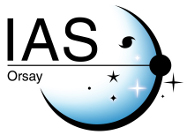The AGE-PRO collaboration, bringing together astronomers from Europe, America, and Asia, has unveiled news constraints on the evolution of dust and gas in protoplanetary disks thanks to an ambitious ALMA program targeting 30 sources. Through combined analyses of dust thermal emission and gas spectral lines, it appears that the gas reservoir available to form giant planets evolves more slowly than the dust reservoir.
Latest News
2 weeks 13 hours ago
4 months 1 week ago
Thanks to its newly tilted orbit around the Sun, the ESA-led Solar Orbiter spacecraft is the first to image the Sun’s poles from outside the ecliptic plane. This unique viewing angle will change our understanding of the Sun’s magnetic field, the solar cycle and the workings of space weather.
7 months 1 week ago
The Simons Observatory (SO has reached a significant milestone with the successful installation of its Large Aperture Telescope (LAT).
7 months 2 weeks ago
At midday on Wednesday March 19, 2025, ESA released the first survey data from the Euclid space mission.
7 months 3 weeks ago
We stand in solidarity with all our colleagues who are victims of the attacks on science, particularly by the Trump administration. We categorically oppose all forms of censorship and reaffirm our unwavering commitment to the fundamental values of science: freedom, integrity and openness. We are committed to defending these values, and we invite you to join us in this commitment, particularly through Stand Up for Science actions.












